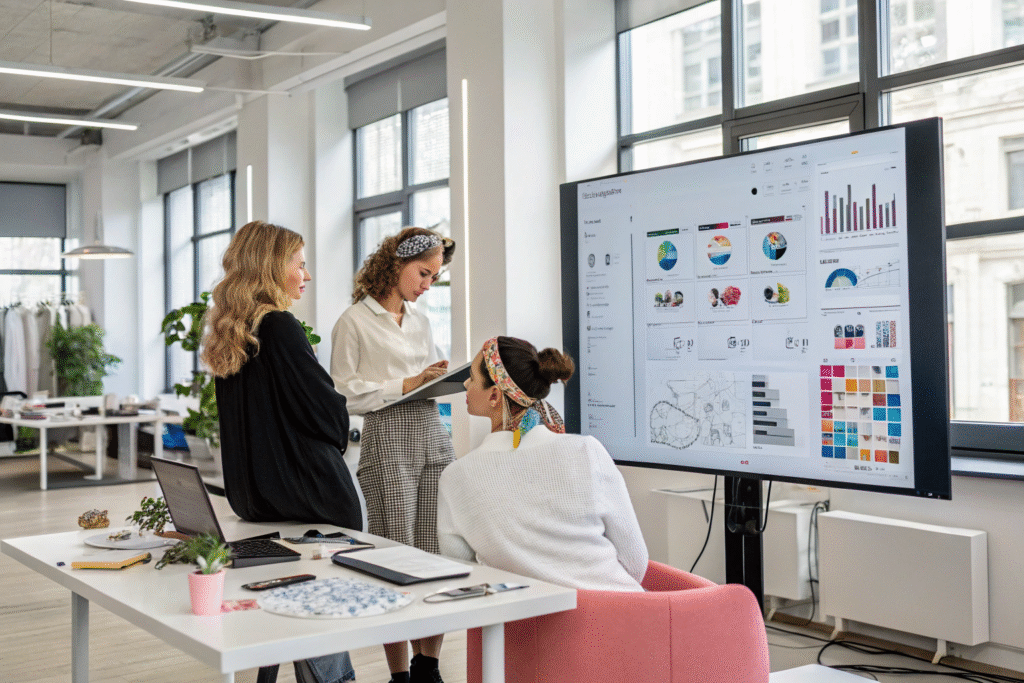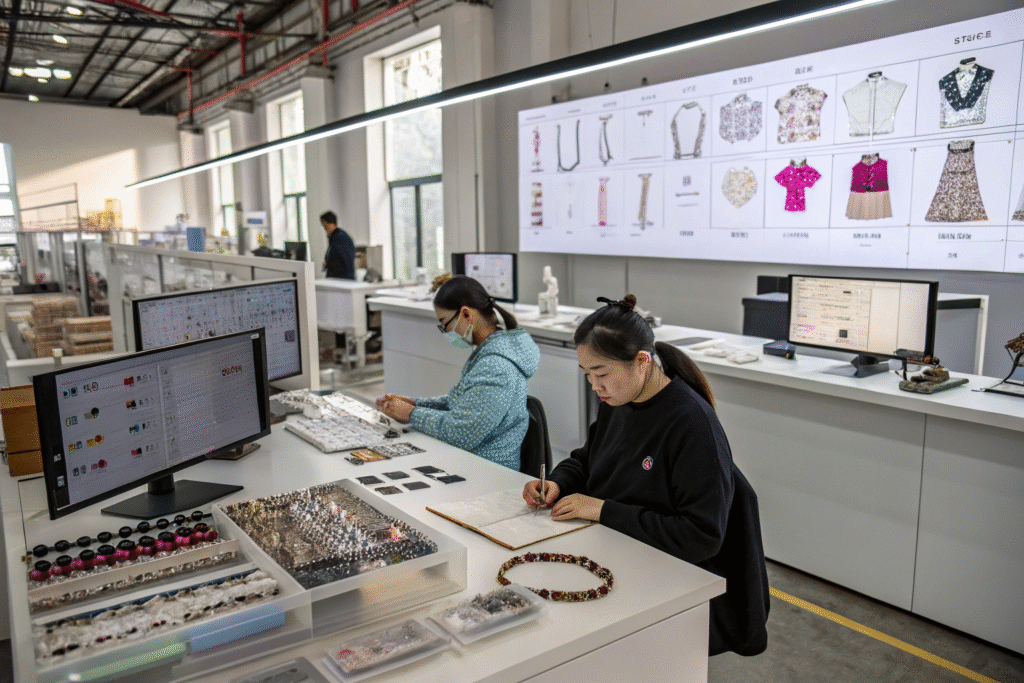In today’s fast-moving fashion world, predicting the next big hair accessory trend is not just an art—it’s a science. Many brands still rely on seasonal lookbooks, runway shows, and intuition. But in a market where consumer tastes shift at lightning speed, these traditional methods often fall short. This leads to missed opportunities, unsold inventory, and products that feel outdated before they even hit the shelves.
By partnering with manufacturers who integrate AI for hair trend forecasting, you gain a competitive edge. AI analyzes social media buzz, influencer styling, global runway data, and retail sales patterns to spot emerging trends months ahead of the mainstream market. This means your product launches align perfectly with what customers are about to want—not what they used to want.
Working with an AI-driven supplier allows you to shorten product development cycles, reduce risk, and target your designs more precisely. Instead of producing in bulk and hoping for sales, you can design with data-backed confidence, knowing that your claw clips, pearl hairpins, or silk headbands match the market’s upcoming appetite.
How Does AI Predict the Next Hair Accessory Trend?
AI trend forecasting starts by gathering vast amounts of data from fashion shows, social media platforms like Instagram and TikTok, online retail listings, and even hairstyle search trends on Google. This data is processed through algorithms that identify recurring styles, color preferences, and accessory shapes gaining momentum.
AI doesn’t just copy current trends—it predicts what will be next. For example, if pastel-toned velvet scrunchies are showing small but consistent spikes in searches in multiple countries, AI can alert manufacturers months before the trend hits mass retail. This helps brands plan production early and avoid last-minute sourcing stress.

What data sources do AI systems use for forecasting?
Modern AI systems pull from a mix of public and proprietary data, including WGSN fashion insights and Google Trends, ensuring predictions are based on both industry expertise and consumer behavior.
How does this reduce overproduction risks?
When you know which styles and colors are likely to sell, you can produce more accurately. This minimizes unsold stock, avoids clearance sales, and helps maintain your brand’s value in the eyes of customers. Many of our clients have reduced excess inventory by over 30% after shifting to AI-backed planning.
What Are the Benefits of AI in Product Development Speed?
Speed is critical in the accessories business. Without AI, brands often take months from concept to store launch. With AI-powered forecasting, you can cut this time drastically by starting designs with proven demand signals.
An AI-informed design process eliminates the guesswork. Instead of spending weeks debating which color palette might resonate, you have a data-backed roadmap. Your manufacturer can immediately start sampling the right fabrics, materials, and embellishments that match the upcoming season’s trends.

How much faster can AI make product launches?
Many brands report a 25–40% faster launch time when working with manufacturers using AI tools like Edited or Heuritech, because early decisions are made with confidence.
Can AI improve communication between brand and factory?
Yes. AI-generated mood boards and reports act as a shared visual language between your design team and our production department. This reduces back-and-forth emails and sampling errors, meaning you get final products faster and with fewer adjustments.
How Can AI Help in Global Market Adaptation?
Different regions have unique preferences for hair accessories. AI forecasting tools allow manufacturers to customize production for each market by analyzing demand signals from different countries. For example, while pearl barrettes may be trending in Paris, oversized claw clips might be hot in Los Angeles, and silk headscarves could be popular in Dubai.
With AI, we can produce market-specific collections that maximize sales potential in every region. This helps brands maintain a consistent global presence while still catering to local tastes.

How does AI adapt styles for different cultures?
By studying Pinterest trend data and retail sales from each region, AI identifies which colors, shapes, and materials resonate locally. This ensures product relevance across diverse customer bases.
Can AI help with timing launches for different markets?
Absolutely. Some trends emerge in Asia months before reaching Europe or the US. AI tracks these timelines, allowing manufacturers to produce and ship region-specific designs at the right moment for peak demand.
Why Does AI Integration Improve Buyer Confidence?
For buyers, partnering with an AI-powered manufacturer means you’re not gambling on trends—you’re investing in data-driven decisions. When you see forecasts backed by real analytics, it’s easier to commit to larger orders or experiment with bold new styles.
This confidence can also strengthen long-term supplier relationships. When your launches consistently succeed, you build trust in your manufacturer’s capabilities. Over time, you can scale production more aggressively without fearing misaligned inventory.

How does AI help in negotiating with retailers?
If you can present AI-backed demand forecasts to major retailers, you have a stronger case for higher order volumes and better shelf placement.
Does this make small brands more competitive?
Yes. Smaller brands often can’t afford expensive market research teams. By partnering with an AI-savvy factory, they gain access to predictive insights that level the playing field with big players.
Conclusion
Partnering with manufacturers that use AI for hair trend forecasting isn’t just a modern upgrade—it’s a strategic advantage. AI helps identify emerging styles before they go mainstream, speeds up product development, customizes designs for different markets, and boosts buyer confidence with data-driven decisions.
If you want to align your hair accessory launches with what the market is about to crave, Shanghai Fumao is your ideal partner. Contact our Business Director, Elaine, at elaine@fumaoclothing.com to start developing your own AI-informed hair accessory line today.









